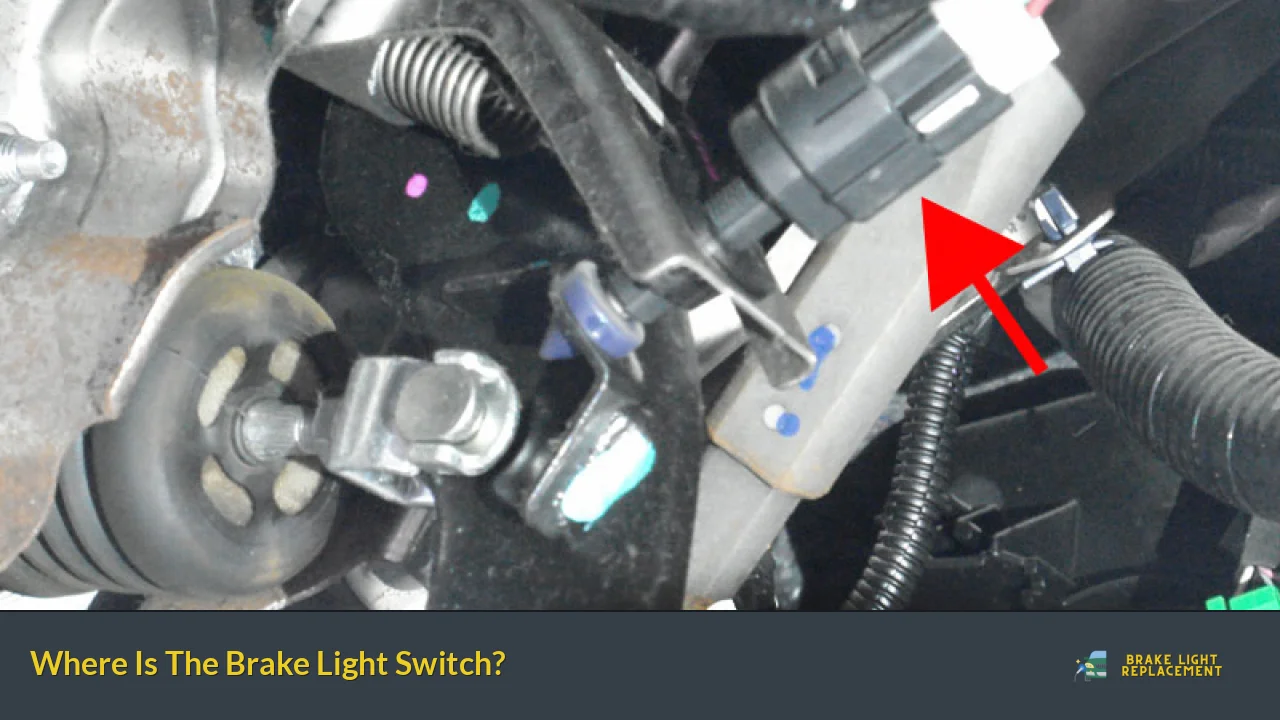The brake light switch is a critical component of your vehicle’s braking system. It serves the essential function of illuminating the brake lights when the brake pedal is pressed, thereby alerting other drivers that you are slowing down or stopping. This small yet vital switch plays a significant role in vehicle safety, as it not only activates the brake lights but can also influence other systems such as anti-lock brakes and cruise control.
Typically, the brake light switch is located near the brake pedal assembly, under the dashboard, or on the firewall close to the top of the pedal lever. Understanding its location and function can help you diagnose issues related to your brake lights and ensure your vehicle remains safe for driving.
| Component | Function |
|---|---|
| Brake Light Switch | Activates brake lights when pedal is pressed |
Understanding the Brake Light Switch
The brake light switch is often a mechanical device that engages when the brake pedal is pressed. In modern vehicles, it may also be an electronic switch that operates based on sensors detecting pedal movement. The primary role of this switch is to turn on the rear brake lights, which are crucial for communicating with drivers behind you.
Additionally, this switch can play a role in more complex systems within your vehicle. For example, it can enable features like *gear selection* in automatic transmissions and activate the *anti-lock braking system (ABS)*. Therefore, a malfunctioning brake light switch can lead to several issues beyond just non-functioning brake lights.
The location of the brake light switch can vary by vehicle make and model, but it is generally found:
- Directly above the brake pedal
- Underneath the dashboard
- Near the firewall where the brake pedal assembly is mounted
Understanding where to find this switch can save time when troubleshooting brake light issues.
Symptoms of a Faulty Brake Light Switch
Identifying a malfunctioning brake light switch is crucial for maintaining vehicle safety. Here are some common symptoms that indicate a faulty switch:
- Brake lights do not illuminate: If pressing the brake pedal does not activate the rear lights, it may indicate a failed switch.
- Brake lights stay on continuously: A stuck or malfunctioning switch may cause the lights to remain illuminated even when not pressing the pedal.
- Cruise control issues: If your cruise control disengages unexpectedly or fails to set, it could be linked to a faulty brake light switch.
- ABS warning light: A malfunctioning switch can trigger warning lights on your dashboard, particularly for systems relying on accurate braking signals.
Recognizing these symptoms early can help prevent further complications and ensure your vehicle remains safe to drive.
How to Locate Your Brake Light Switch
Finding your brake light switch typically involves accessing the area around your brake pedal. Here’s how you can locate it:
1. Sit in the driver’s seat: Position yourself comfortably with good visibility of the footwell.
2. Look under the dashboard: The switch is usually mounted near where the brake pedal pivots. You may need to lean down or use a flashlight for better visibility.
3. Identify wiring connections: The switch will have electrical connectors attached to it; these connect it to your vehicle’s electrical system.
4. Check for mounting brackets: The switch is typically secured with screws or clips, so look for any fasteners that may hold it in place.
By following these steps, you should be able to locate your vehicle’s brake light switch without much difficulty.
Replacing a Faulty Brake Light Switch
If you determine that your brake light switch is faulty, replacing it is often a straightforward process that you can do at home with some basic tools. Here’s how:
1. Gather tools: You will need a screwdriver, possibly pliers, and a replacement switch compatible with your vehicle model.
2. Disconnect battery power: To ensure safety while working on electrical components, disconnect the negative terminal of your battery.
3. Remove panels if necessary: Depending on your vehicle design, you might need to remove panels under the steering wheel for better access.
4. Disconnect old switch: Unplug any wiring connected to the old brake light switch and remove any screws holding it in place.
5. Install new switch: Position the new switch where the old one was located and secure it with screws. Reconnect any wiring harnesses.
6. Test functionality: Before reassembling everything completely, reconnect your battery and test if your brake lights function correctly when pressing the pedal.
7. Reassemble panels: Once confirmed working, replace any panels removed during installation.
This process should take about an hour or less if done carefully.
FAQs About Brake Light Switch
- What does a brake light switch do?
The brake light switch activates the rear brake lights when you press down on the brake pedal. - Where is my car’s brake light switch located?
The brake light switch is typically located under the dashboard above or near the top of the brake pedal. - How do I know if my brake light switch is faulty?
If your brake lights do not illuminate when pressing the pedal or stay on continuously, it may indicate a faulty switch. - Can I replace my own brake light switch?
Yes, replacing a brake light switch is generally straightforward and can be done at home with basic tools. - How much does it cost to replace a brake light switch?
The cost typically ranges from $30 to $75 for parts; labor costs may vary if done professionally.
Understanding where your brake light switch is located and how it functions can significantly enhance your ability to maintain your vehicle’s safety systems effectively. Regular checks and timely replacements ensure that this small component continues to perform its crucial role in driving safety.
